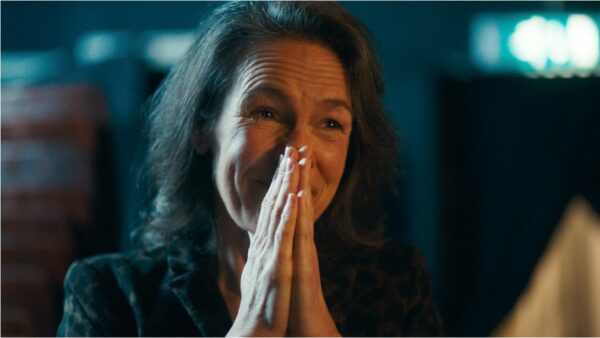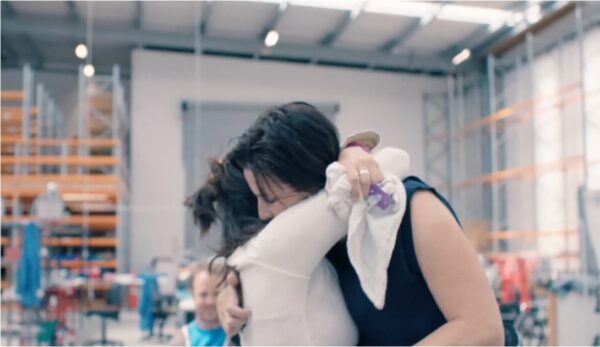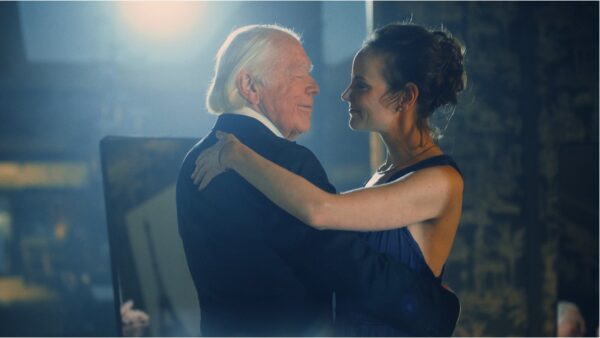Did you know there is a secret human emotion? One you’ve probably never heard of, even though you’ve felt it many times? It’s an emotion so powerful, it can create intimate memories and bonds between people that last a lifetime. And this fundamental, universally understood human emotion is at the very heart of meaningful storytelling — the reason why I’m so fascinated by it.
I’m talking about that sudden feeling of oneness, love, belonging, or union you can feel with another person, or entities like your family, a team, a nation, or nature. The emotion you feel when you first hold your newborn child. When you see a film that ends with two lovers reuniting. Or when you’re at a concert, part of a crowd of thousands, and you are all singing in perfect unity.
CONNECTION AND BELONGING
I’m sure I don’t have to tell you what this emotion feels like. A warm, glowing feeling in your chest. Goosebumps all over. Tears in your eyes. And an overwhelming feeling of connection and belonging. There isn’t a specific word for this emotion in English, Dutch or most other languages in Europe. But thankfully, in Sanskrit, there is: kama muta.
Strange, right? An emotion that everybody knows yet is rarely discussed. An international group of scientists from the fields of psychology and anthropology thought the same. These scientists, connected to institutions such as the University of Oslo, UCLA and UvA (Amsterdam) started the Kama Muta Lab to study the function and expressions of kama muta. Over the years I have been in contact with Alan Fiske, one of the lab’s founders. And recently I was fortunate enough to sit down with him to talk in depth about
kama muta. You can watch part of the interview here:
Kama muta and storytelling are deeply intertwined concepts. But how does this relationship work? To explain this, we first have to elaborate a bit on what Alan Fiske has to say about human relationships.
THE FOUR HUMAN RELATIONSHIPS
Academically, Alan Fiske is famous for his relational models theory, a seminal theory in cultural anthropology that categorizes all human relationships in four elementary forms:
- Authority ranking relationships describe relationships where people are ordered along some hierarchical social dimension, like in the army.
- Equality matching relationships are where people balance out each other’s actions, like when you take turns in a chess match.
- Market pricing relationships revolve around a shared model of a value or metric that allows comparison, like in monetary transaction.
- Communal sharing relationships revolve around a group of people who feel as one, as equals, as part of a greater whole, like in a church gathering, or a close-knit family.
This fourth relationship model, communal sharing, is the one to focus on right now. The difference between communal sharing and the other three relationship models is that communal sharing is not a formal or transactional model. It’s based on altruism. Selflessness. Love. It expresses itself though a profound emotional connection with others. And when we feel that emotional connection the strongest – more specifically, when a communal sharing relationship suddenly intensifies – that’s the moment we experience kama muta.
KAMA MUTA AND STORYTELLING
Back to storytelling. Because in the context of story, kama muta is an incredibly important tool. Why? First, because it’s a transferrable emotion, something you can feel by watching others experience it. Let me give you an example. When at the end of The Shawshank Redemption (1994), Andy Dufresne (played by Tim Robbins) and ‘Red’ (Morgan Freeman) reunite on the beach, a tremendous surge of kama muta engulfs us. Their reunion is an experience we share with them – their experience of kama muta evokes kama muta in us.
And second, kama muta compels us to share the experience with others. When we encounter a story that evokes kama muta in us, such as a social media video, we feel a strong need to share this powerful communal experience with others. In fact, the reason films like Forrest Gump (1994) or Groundhog Day (1993) have become cultural touchstones is not just because they’re great films, it’s also because these films inspire you to tell others about them (like I’m doing right now). That’s the power of kama muta.
That’s why, at 1Camera, we are passionately driven to tell cinematic stories that evoke a strong sense of kama muta. Because we love to make people feel a deep connection, a sudden surge of oneness, with you and your message. We don’t just tell them that your message is worthwhile, we let them feel it, by making them experience a surge of positive emotion, a warm feeling of connectedness. A feeling they will want to share with others, by sharing and showing your film to friends, family, and co-workers. That’s what kama muta does for you. And that’s what we do for you.
REUNIFICATION AND REDEMPTION PLOTS
So, how do we evoke kama muta effectively in our films? Let me reveal part of that process to you.
When developing corporate cinema, we start with an extensive story research phase to find pieces of story within your company’s history and culture that fit a very specific mold. Elements that people have been using in emotionally powerful storytelling for millennia, all around the world.
So, what are these story elements? First, we look for stories about people who have a strong emotional connection between them but are separated by challenging obstacles they struggle to overcome, before reuniting in the end. These people can have any kind of relationship – they can be lovers, family, or members of the same community. We tend to call these stories ‘reunion plots’. A great example of a reunion plot is the film Lion (2016). It’s a true story about Saroo, a five-year-old Indian boy who gets lost on the streets of Calcutta, thousands of kilometres from home. He gets adopted by an Australian couple, only to find his lost family 25 years later. The moment when Saroo finally reunites with his biological mother is a scene that invokes tremendous kama muta.
We also strive to create stories where the main character travels along a so-called ‘redemption arc’. In stories like these, something that is wrong, an injustice, is made right, through struggle and personal growth. Stories like The Trial of the Chicago 7 (2020), a film based on the infamous 1969 trial of seven anti-war activists charged by the US government with conspiracy. The film ends in an emotionally powerful courtroom scene where justice prevails against repressive authority figures.
These are the stories that work best to create kama muta. Because both these story types – reunion plots and redemption arcs – start with loneliness, despair, and lack of connection, and end on unity, love, and belonging: a sudden intensification of a communal sharing relationship, in anthropological terms. In short, they evoke kama muta through plot and character.
STORYTELLING TOOLKIT
Besides focusing on certain plot structures in our storytelling, there is also a strategy behind the types of imagery and sound we use to tell these stories. For instance, we tend to show characters experiencing moments of kama muta themselves in our films, scenes of sharing, bonding, hugging, or moving in harmony, to invoke kama muta in the viewer. These scenes are supported by uplifting, emotionally powerful music that emphasizes this surge of kama muta.
These elements are part of the vast storytelling toolkit we use for our award winning corporate cinema productions. Films that resonate with people across the globe because we have learnt to harness the power of kama muta, by developing ways to invoke it effectively through storytelling. This enables us to create films that do more than touch people — they provide a feeling of deep human connection, and inspire the viewer to share this experience with others.
We are of course indebted to the knowledge and insights Alan Fiske and the Kama Muta Lab have shared with us and the rest of the world over the years. That’s why we are committed to a long-term collaboration with Alan Fiske and his lab, by sharing our own insights and experiences, and supporting their research into the universal power of the secret human emotion that you now have a name for: kama muta.
— Jasper
Visit the Kama Muta Lab website: https://kamamutalab.org/
And watch some of our kama muta films:



